The Ethereum ecosystem offers many advantages, such as security and accessibility, but the only drawback is the high gas fees. It can significantly raise the barrier to entry for newcomers and lead to disappointment. Although Vitalik Buterin has already developed a solution to this problem, its implementation will take some time - approximately five years. Therefore, at the moment, the optimal choice for crypto enthusiasts is second-layer (L2) solutions, which allow scaling Ethereum and reducing gas costs. In this article, we will explore one of the most popular L2 solutions - Arbitrum.
Table of Contents:
- What is Arbitrum?
- How does Arbitrum work?
- Who developed Arbitrum?
- Which projects are using Arbitrum?
- Using the Arbitrum Network
- How to transfer tokens to the Arbitrum network
- Conclusion
What is Arbitrum?
Arbitrum is a second-layer scalability solution for the Ethereum network. As a second-layer solution, Arbitrum is closely integrated with the main Ethereum network and operates in sync with it. Applying scaling at the L2 level allows for the following benefits:
- Offloading the main Ethereum blockchain and reducing the workload for validators in verifying transactions by outsourcing complex computations to external solutions.
- Reducing transaction fees on the blockchain by using rollup technology, which allows for bundling multiple transactions into one and storing them in external contracts, while confirmation is done on the main blockchain.
- Improving network scalability and increasing blockchain throughput without compromising security and accessibility.
Arbitrum is an extension for the Ethereum network that enables users to conduct transactions using ETH or other tokens without burdening the main network. Arbitrum validators are responsible for verifying transactions, compressing transaction processing results, and sending them to Ethereum, where the information is recorded on the main network. Mainnet validators are provided with sufficient data to verify the correctness of transactions received from Arbitrum, if needed.
Arbitrum is also the most popular Layer 2 (L2) network in the Ethereum ecosystem, with an estimated total value locked (TVL) of $5.6 billion:
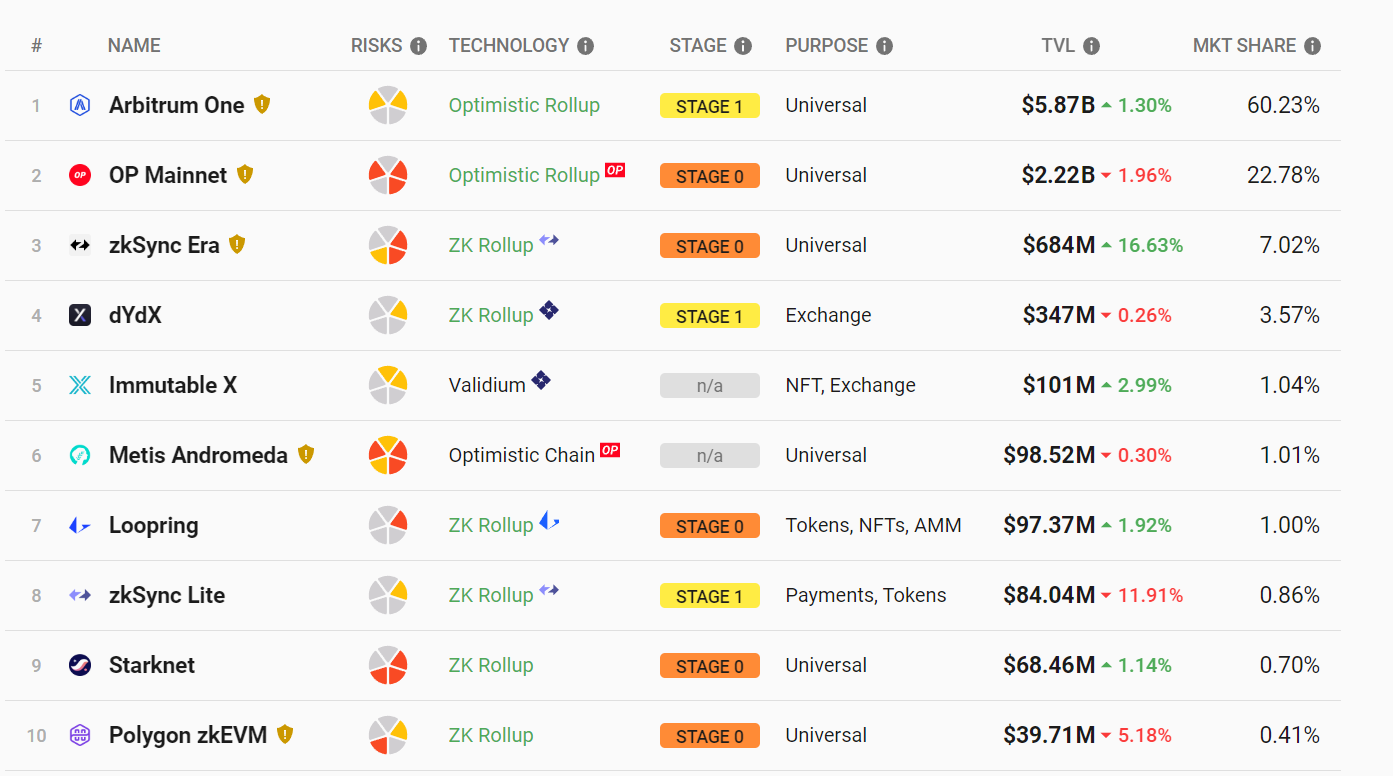
How does Arbitrum work?
Arbitrum is based on the technology of Optimistic Rollups, which is also used by several competing L2 solutions, including Optimism. However, the developers of Arbitrum have optimized the rollup structure in such a way that it transmits the minimum amount of data to the main network. This reduces transaction costs even compared to L2 competitors:
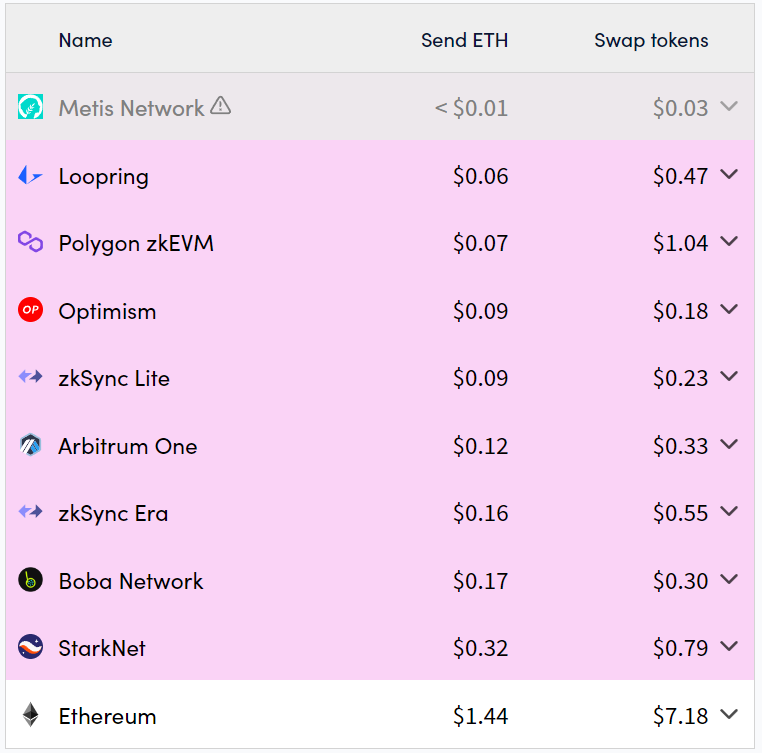
The name Optimistic Rollups comes from the "optimistic" approach to trust in the network - each block added by a validator is considered valid until proven otherwise. Due to this, the consensus algorithm used in Optimistic Rollups is known as Proof-of-Fraud.
The developers of Arbitrum have made several improvements to Optimistic Rollups, including adding three types of validators and implementing a unique dispute resolution mechanism aimed at reducing the load on the main network. As a result, the following transaction processing algorithm is obtained:
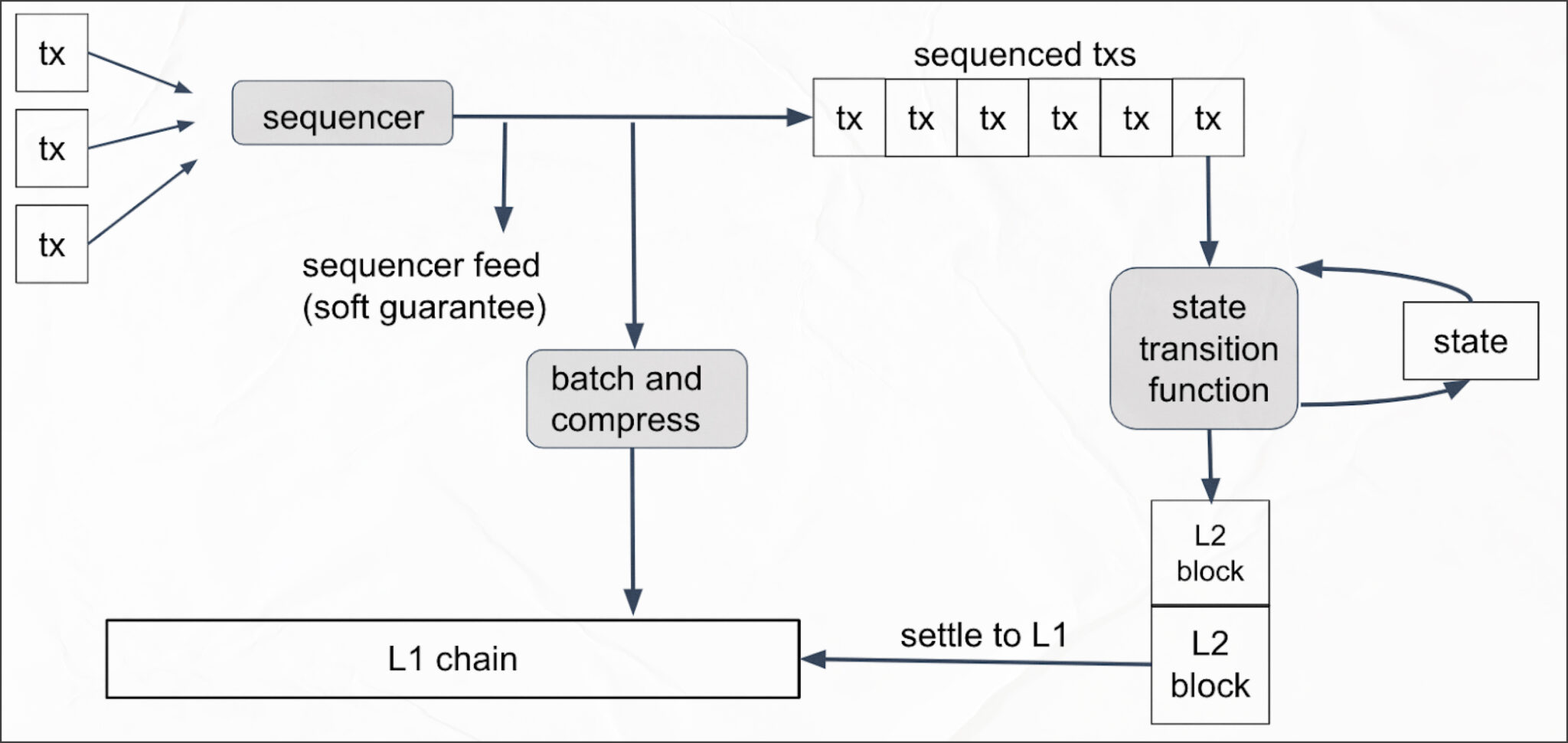
The process works as follows:
- A user initiates a transaction in the Arbitrum network. This transaction is placed in the "Incoming" folder, where a special node called the Sequencer creates a strict sequence of transactions.
- When a sufficient number of transactions have accumulated, they are formed into a "batch," compressed, and sent to the Ethereum main network.
- Concurrently, the ordered transactions are sent to the validators of the Arbitrum network. Let's take a closer look at this process:
- A block of transactions is created by a single validator who holds a stake, i.e., a certain amount of locked tokens.
- The other validators, also known as guardian validators, observe the correctness of the created block and have the ability to make "bets" on the correct block in case multiple versions of the block with the same data appear in the network.
- Blocks are confirmed using a special dispute resolution procedure developed by Arbitrum. In the event of a dispute, the validator who proposed the incorrect block loses their stake, as well as the guardian validators who supported it. The lost funds are redistributed among the loyal guardians as payment for their services.
- Once the block is formed, this data is also transmitted to the Ethereum network, and the transaction is considered complete. Thus, the main network can verify the data received in the preliminary "compressed" batch with the data of the full block.
The Arbitrum consensus mechanism allows validators to challenge a block within approximately 7 days. If you want to withdraw assets from Arbitrum to Ethereum using the native bridge, it may take you about a week to receive those assets. However, there are faster alternatives, such as using other bridges that operate through liquidity pools.
Who developed Arbitrum?
Offchain Labs is an American company registered in 2018 that stands behind the Arbitrum network. Its co-founders are Harry Kalodner, Steven Goldfeder, and Ed Felten. Ed Felten was previously a professor at Princeton University, and Harry Kalodner and Steven Goldfeder are considered experts in the field of cryptography.
Offchain Labs, the developer of Arbitrum, raised $3.7 million in venture investments from several funds, including Pantera Capital. Then, from 2019 to 2021, the company conducted three investment rounds, resulting in a total funding of $123.7 million.
Which projects are using Arbitrum?
Arbitrum was developed as a network that is fully compatible with the Ethereum Virtual Machine (EVM). This means that the Arbitrum virtual machine allows for running Ethereum smart contracts with minimal modifications. As a result, popular projects operating on the Ethereum L1 network have started integrating with Arbitrum even before the mainnet launch. Some of these projects include:
- Uniswap
- Aave
- Bancor
- Curve
Arbitrum is also supported by leading centralized exchanges, bridges, wallets, and infrastructure projects. To better understand the network's ecosystem, you can use the native AppPortal or refer to the infographic:
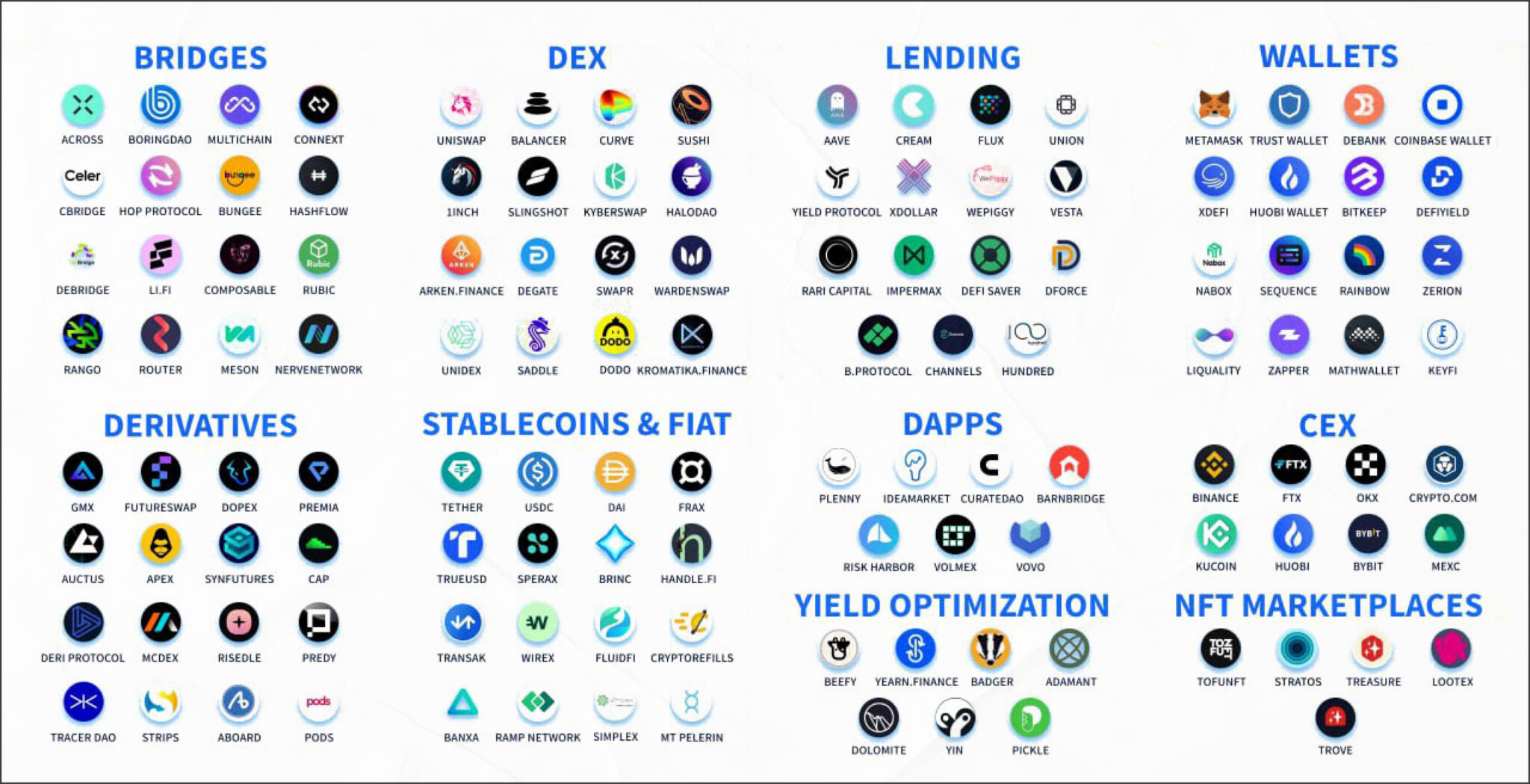
Using the Arbitrum Network
To use Arbitrum, you will need a wallet compatible with this network. Currently, there is no native wallet for Arbitrum, but you can connect to the Arbitrum network using the MetaMask wallet or some other wallets that support Arbitrum. To do this, follow these steps:
Step 1. Let's go to the official Arbitrum Bridge website and link your wallet: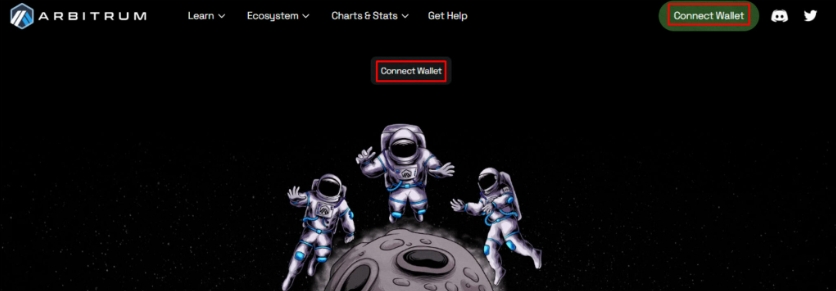
Step 2. Confirm the connection to Arbitrum:
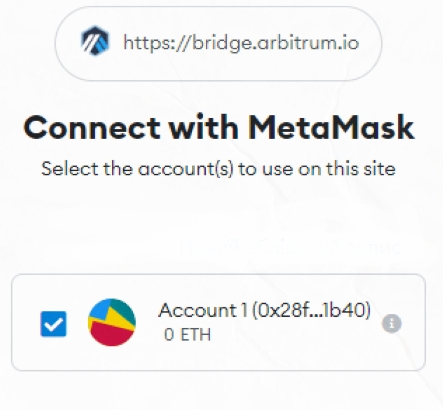
Step 3. The bridge will offer to automatically add the network to your wallet. Accept the proposal and agree.
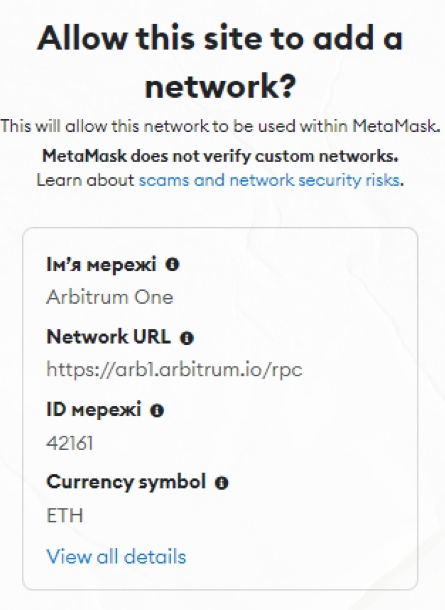
How to transfer tokens to the Arbitrum network
There are two ways to transfer tokens to Arbitrum: using the native Arbitrum bridge or using third-party services that support this ecosystem. To deposit tokens onto Arbitrum using the native bridge, follow these steps:
| Step | Description |
|---|---|
| Step 1 | Connect your wallet to the official Arbitrum bridge. |
| Step 2 | Confirm the transaction in your wallet. |
| Step 3 | Select the networks between which you want to transfer tokens, specify the amount, and confirm the transaction. |
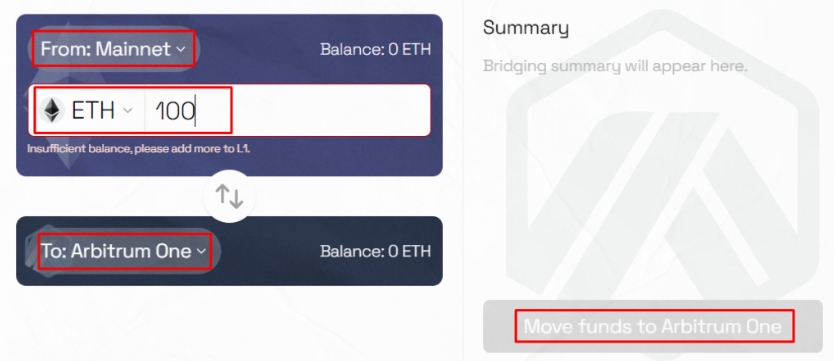
The infographic above shows a list of bridges that support the Arbitrum network. Specific instructions may vary depending on the chosen service, but the general workflow remains the same as described above.
Conclusion
Arbitrum is a layer-two solution for Ethereum that helps reduce the load on the main network, thus lowering gas costs and transaction processing time. Arbitrum is fully compatible with the Ethereum Virtual Machine (EVM), which means that numerous DeFi projects already available on the Ethereum mainnet are also accessible on the Arbitrum network. This significantly benefits both experienced users and newcomers who are not willing to pay several (tens of) dollars for swaps, NFT minting, or transaction fees.
While Arbitrum operates as a separate network, requiring the use of a bridge for token transfers, it is already functioning and that is its main advantage. Cryptocurrency users can now take advantage of a user-friendly L2 platform and perform the same operations across multiple DeFi platforms that were previously only possible on the Ethereum mainnet, but at a significantly lower cost. Cost reduction is the first step towards efficient capital utilization, so it is recommended to explore Arbitrum and make the most of its capabilities!




